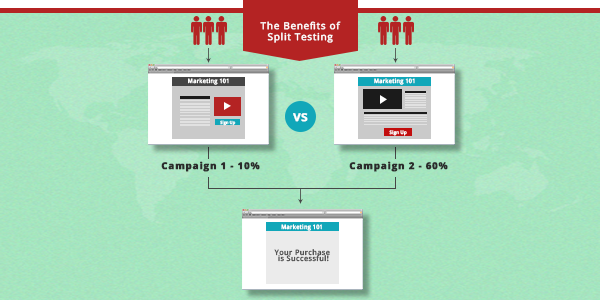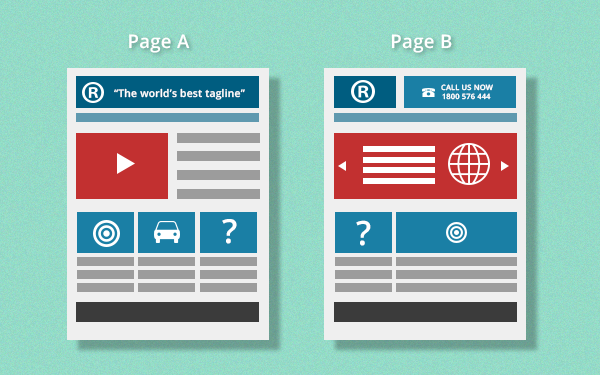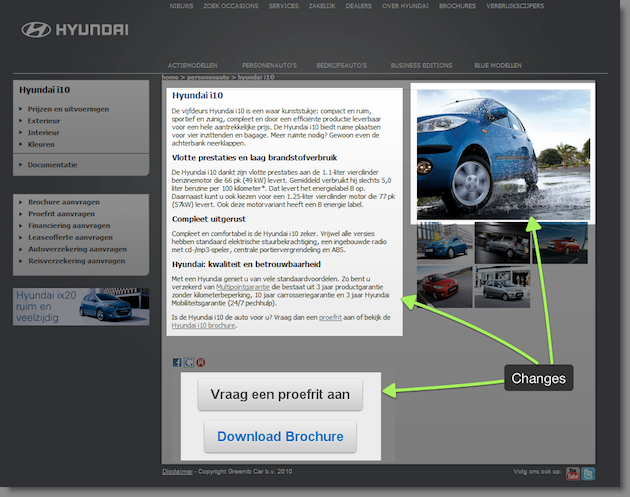Do you know what split testing is?
Have you ever purchased anything from Amazon? Clicked on a Facebook ad? Been on Groupon?
Chances are you’ve already been a part of it!
As a marketer, the ability to test whether or not something works for your site in the most hassle-free way as possible — for both yourself and your site visitors — is crucial. And that’s what split testing essentially is—the process of learning to speak your market’s language in the easiest and fastest way possible.
It’s not as complicated as you may think–and here’s how it works:
It starts with a simple installation of tracking code on your pages. And, what it will do is load up multiple versions of the same page for different sets of visitors on your site so that you can directly determine how effective one is against the other(s).
So let’s say that in Page A, you decided to post an opt-in with a curiosity-driven headline (i.e. The best age-defying skin treatment is just in your kitchen pantry. Click here to find out what it is.) and on Page B, you used a benefit-driven headline (i.e. Get younger looking skin in just 48 hours!) instead. Split-testing will determine which one will be more effective by sending half of your page visitors to Page A randomly and the rest to Page B. Depending on how each group responds, you can now determine which page was more effective.
You can use it to tailor-fit your needs.
There are various types of split tests and choosing what method to use will depend on what you need. Generally though, these are the two most common methods:
1. A/B Testing
Involves testing a single element of your page—it could be anything: a headline, an image, long-form copy vs. VSL , anything that you need to check.
Here’s an example of an A/B test performed by beauty brand NuFace using Visual Website Optimizer — a split testing tool that allows you to easily manipulate elements on your site that you want to test. In this example, NuFace wanted to test the effect of adding free shipping on the average order value (AOV) on ther ecommerce site. Results showed that they got a 7.32% increase in AOV. If NuFace did not perform A/B testing, they could have missed this opportunity.
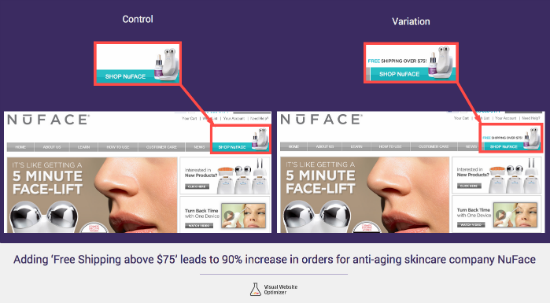
2. Multivariate Testing
Involves testing multiple elements and its combinations on one page versus another combination on another.
Below are images from the multivariate testing that was conducted by Hyundai. This is the control page:
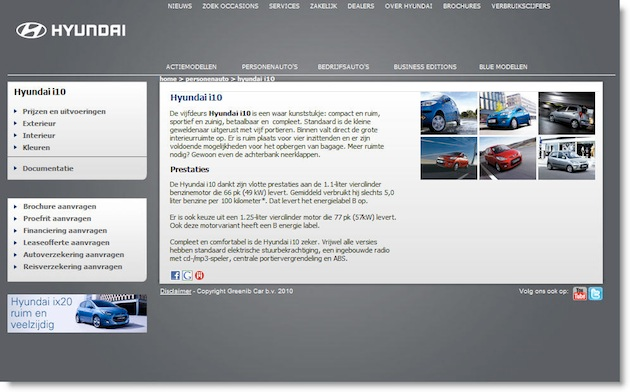
Using this test, Hyundai saw a 62% increase in the number of test drive requests made via their website.
While both are useful, I personally recommend the use of A/B testing. The challenge with multivariate testing is that you will need an enormous amount of traffic to get credible results; something that new websites may not have yet.
On the other hand, A/B testing already gives you an insight into what your audience wants based on which test won. It makes easier for you to modify elements on your page according to how they want it. In other words, A/B testing tells you easier than Multivariate testing what your site visitors like or want based on the test results.
It takes the guesswork out of marketing
The most important part of testing is the hypothesis.
An example of a hypothesis would be:
“Curiosity-driven headlines are more likely to get my audiences to click on blog posts and explore my website.”
Split-testing a curiosity-driven headline against the original headline can help you prove or disprove this.
For all we know, benefit-driven headlines are what compels your audiences to click on your site and explore it, and all this time, you’ve been writing copy that’s meant to pique their curiosity. On the flipside, your hypothesis could be correct and after split-testing proves this, you can apply it to other marketing endeavors.
Check out this case study from www.visualweboptimizer.com which illustrates this example further.
You get credible, tangible results
I mentioned earlier that split-testing is like learning to speak your audience’s language.
My favorite metaphor for this is being in a foreign country. You’re new, no one understands you, so you now find yourself in a position where you have to try to understand them. And the sooner you start learning their language and culture, the sooner you start learning how to navigate through their world.
This scenario applies to split testing for your own website. Think of your website as yourself and the audience you want to reach as the foreign country. The earlier you begin to speak their language, the easier it will be to find out how you can communicate effectively, which can be tracked via:
- Site visits
- Audience engagement
- Revenue
- Clicks
It’s a great investment
For as little as $50 a month, you have the chance to improve your website so that you don’t lose touch with your audience.
When I create a website, I go into it thinking that it doesn’t necessarily have to be 100% perfect. In fact, I kind of already expect it to be imperfect. But I’m confident that after several split-testings and using the data I get from it, I can tweak those little details to create a site that myself and my intended audience can understand perfectly.
Is your website doing as well as you think it is?
Is that particular copy really the best to use?
Should you choose a better image?
Visual Website Optimizer (VWO) is one of the best websites for split-testing that I can recommend:
- Go to http://visualwebsiteoptimizer.com/.
- Sign up for the FREE 30-day trial.
- Mouse over “Tools”, click “Get Tracking Code”, copy the VWO Tracking Code, and insert the code on your site.
- You’ll get to test up to a thousand visitors for free.
By the end of the trial run, compare your results based on which got the higher rate of clicks—that’s when you’ll know you’re doing something right.
– Mercer
If you’d like to share one of the easiest ways you can check the effectiveness of your site, share this article and click on the links below.
Our SlideShare Slides:
